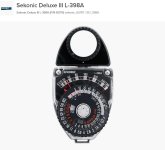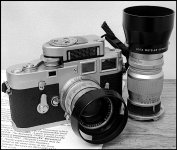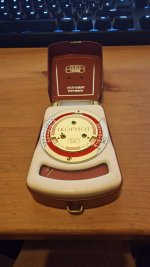- Messages
- 2,649
- Name
- Gareth
- Edit My Images
- Yes
I seem to recall there was a vintage light meter everyone said was excellent but I can't recall what it was called again. I've got a Polaris Flashmeter here but I don't want to use that with my Mamiya as it feels a bit disconnected and I'd rather use something more in keeping.
So any recommendations for a needled light meter that can do reflected and ambient light would be gratefully appreciated.
So any recommendations for a needled light meter that can do reflected and ambient light would be gratefully appreciated.






